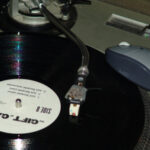There are many choices when it comes to recording and sequencing audio and MIDI tracks at the professional level. In recent years, recording studios have turned away from purely hardware-based recording systems to those that require a computer. The pro audio market has evolved to maturity, but the many digital-audio, workstation-software choices can leave the neophyte confused and overwhelmed.
Here is a rundown of some of the most popular and trusted names when it comes to pro audio software. Each digital audio workstation occupies a unique niche market, and has its own devotees.
There are several factors that will come into play for your decision, such as whether you need to manipulate both audio and MIDI tracks within the same project, the amount of money you have to spend, whether you are going to do any serious audio mastering, and how much time you have to devote to learning to use a pro audio digital workstation.
Propellerhead REASON
REASON is the one sequencer most popular with producers of hip hop and electronic music, and for a few good reasons. Despite a steep learning curve, REASON rewards its user with an insane amount of functionality when it comes to manipulating drum, VSTi and synth sounds.
There is a great software drum machine included with REASON, titled Redrum. Redrum has the advantage of showing you a graphical representation of the beat, with as many subdivisions as you would like, in any time signature. Propellerhead REASON also has support for any VST plugins you may have, and can serve as a ReWire master or slave software device.
On the downside, any live instrument tracks, vocal tracks, etc. that you wish to include in your finished product cannot be directly recorded into the program. So, you will likely need another piece of software to cut and prepare your samples.
Digidesign Pro Tools
Pro Tools is the most complete, and difficult to learn, digital audio workstation software suite on the market. It is geared toward producers and those who tackle mastering recordings, more than casual musicians or home users. One nice way to get to know Pro Tools is to purchase an audio interface device from M-Audio, a solid computer-based music hardware company that has the same parent company as Pro Tools.
Many of their hardware audio interfaces and PCI sound cards come bundled with Pro Tools M-Powered, a version of the program more geared toward users without extensive experience in the field. If you really get into using Pro Tools, and have the money, you can always upgrade to one of the more complete versions of the program.
A word of caution about Pro Tools M-Powered, though: the software will only work while the M-Box, or other device offered in conjunction with the program, is plugged into your computer.
Ableton Live
Live is geared toward the performance electronic musician or DJ, but in recent iterations has become a full-featured professional digital audio workstation software suite in its own right. It is very expensive, when compared with some of the other similar audio software solutions on the market, but there are cheaper versions available more suited to the beginning producer or electronic musician, such as the LE version, or the Live Lite version bundled with many pieces of music production hardware on the market.
Ableton Live’s strengths lie in its features that allow the user to create and manipulate loops on the fly, to record and incorporate MIDI and audio tracks into a single project, and to stretch or compress the time signature of the music without losing sound quality or changing the pitch. It is a great place to start if you are a musician first, just getting your feet wet in the world of software-based audio recording and sequencing.
Adobe Audition
Despite coming from Adobe, the developer of many of the most popular software tools for the creative mind on the market, Audition has never really taken off to the degree of some of the other professional digital audio workstation software solutions. This is not to say it is not an excellent program, and there are many who swear by it, but its difficult-to-learn interface and price do not justify the amount of features it offers to the budding producer or musician.
Those who use Audition extensively tend to be those who compose audio files for other media beyond just musical tracks, such as film, advertising and radio spots. Using Audition is very visual, and there are many tools at your disposal. Still, there are better alternatives on the market that offer the same tools and more.
Cockos REAPER
When REAPER was released, it really made the software-based music production community think about the nature of the programs they used, their complexity and price. REAPER may not be as fully featured as Pro Tools, Logic or Audition, but it is an excellent, simple-to-use and fully functional pro audio software suite that can be had for around $50. The development is carried out almost exclusively by one individual, and there are updates released for REAPER all the time. It has full VST and VSTi support, and works with ReWire as well.
Even better, the full version of the program, with no limitations whatsoever, is offered for download on the developer’s Web site, allowing potential adherents to try it out at their leisure. Many “never get around to” paying the cost of a license to use REAPER, but if you like it, support the developer and his tireless efforts to make the program better. It is one of the cheapest pro audio software solutions on the market, and does many, many things well.
Apple Logic Pro
Apple’s Mac-only digital audio workstation software suite strikes a good balance between the features offered by many of the programs above, and excels in nearly everything the user asks it to do. There is a certain polish to the interface that is common among Apple products, and it is certainly not light on raw power. It is fast becoming a standard must-have piece of pro audio software, especially among traditional “analog” musicians who are making the jump to digital audio recording and mastering.
The obvious downside is that if you are a PC user, you are left in the cold. Also, as is the case with many Apple products, it can be difficult to get Logic Pro to interface with non-Apple software. If you are the type of user who uses several different pro audio software solutions for different aspects of your craft, you might want to look elsewhere. Still, as an all-in-one digital audio workstation, Logic Pro could likely satisfy all your needs as a musician or producer.
The most important thing to remember when choosing a digital audio workstation is to do your research, and assess your needs, before making a purchase. All of the products listed above, with the exception of REAPER, are very, very expensive. The last thing you need is to spend several hundred dollars on a piece of software and take the hours upon hours it will require to learn it, only to find out that there is a pro audio software solution on the market much better suited to exactly what you are trying to accomplish.
Choose carefully, and stick with what you know all the way through. It is better to learn one or two programs well then to spend thousands of dollars to get all the latest digital audio workstation software on the market, and then never get past the dabbling stage on any one of them.
Sources:
www.digidesign.com
www.ableton.com
www.apple.com/logicstudio/





